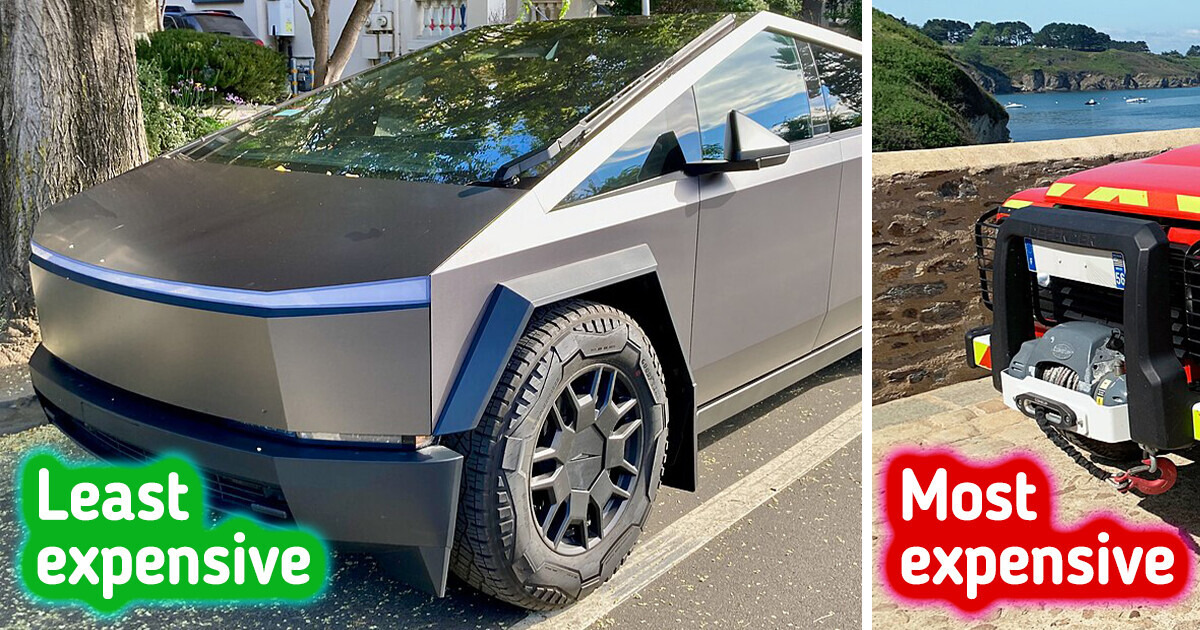My Mother-in-Law Ruined My Birth Plan and I Can’t Forgive Her


Owning a car isn’t just about driving, it’s about keeping it running, too. Think of it like raising a kid. It takes effort, money, and patience.
Some cars? They’re easy to manage. Others? Total drama queens. Let’s see which ones save you money and which will send your budget into a tailspin.
In their 2023 Annual Auto Survey, Consumer Reports asked car owners to share how much they spent on maintenance during the first five years and the second five years of owning their cars. The findings? Eye-opening.
The difference in maintenance costs between brands can add up to thousands of dollars over ten years. Unsurprisingly, luxury cars top the list for expensive upkeep.
Car maintenance isn’t random. A few key factors make all the difference:
For example, BMWs and Mercedes often need costly imported parts and skilled labor. Meanwhile, Toyotas use more common parts, making repairs faster and cheaper.
These are the "lobster dinner" cars. High-maintenance and pricey:
Budget-friendly champs that won’t drain your savings:
Sure, luxury cars turn heads. But they also empty wallets. Brands like BMW, Mercedes, and Audi are notorious for sky-high repair costs. Even routine maintenance, oil changes, brake replacements, can set you back thousands.
Take Land Rover, for instance. People love their off-road abilities and upscale interiors. But when something breaks? You’re in for a hefty bill. Unless you’re rolling in cash, think twice about that high-maintenance lifestyle.

Think of regular car maintenance as giving your car the TLC it deserves. It’s not flashy or exciting, but it’s the key to saving money and avoiding headaches in the long run.
Skipping basic upkeep? That’s like ignoring a strange noise in your house, it might seem fine now, but eventually, things will break down. And when they do, the fix will cost way more than it would’ve if you caught the problem early.
Here’s what regular maintenance can do for you:
The takeaway? Treat your car like a partner. When you give it regular attention and care, it’ll return the favor with reliability, longevity, and fewer costly surprises. A little effort now means a smoother, stress-free ride in the future.
Here’s what you can expect for typical fixes:
Luxury cars? Multiply those numbers. For example, Porsche brake pads can cost around $800—more than double the price for a regular car.
When choosing between new or used, consider this:
Example: A used Honda is a great deal, but a 10-year-old model might need major work, like a timing belt replacement. New cars, while pricier, offer peace of mind for those first few years.
Think of car maintenance budgeting like prepping for those surprise pizza nights, you know they’re going to happen, but you’re never quite sure when. The same goes for car repairs. Planning ahead saves you from scrambling when that check engine light pops on (always at the worst time, right?).
A good rule of thumb is to stash away $50–$100 per month for maintenance. The exact amount depends on a few things:
Treat this like a piggy bank for your car. Small contributions add up, and when the time comes for an oil change, new tires, or a “whoops, I hit a pothole” repair, you’ll be ready.
So, whether it’s for "brake pad day" or "oops, that pothole got me" day, your maintenance stash is like insurance for your ride. Trust us, you’ll thank yourself when the time comes.
Keeping your car in great shape doesn’t have to cost a fortune. With a little effort and smart habits, you can save money while avoiding major headaches.
Here’s how:
A little maintenance here and there goes a long way. Treat your car right, and it’ll reward you with a longer life and fewer surprises. Your wallet will thank you!
Think about your priorities. Do you need:
Research maintenance costs, reliability ratings, and reviews before buying. The right car should fit both your lifestyle and your wallet.
Owning a car doesn’t have to drain your bank account. By choosing a reliable brand, staying on top of maintenance, and driving smart, you can save money and enjoy the ride. Whether you’re driving a trusty Toyota or a flashy BMW, remember: a little care goes a long way, for your car and your wallet.
5 pro tips for buying a reliable used car: how to choose the best vehicle. Click here to learn how to pick the perfect ride!











